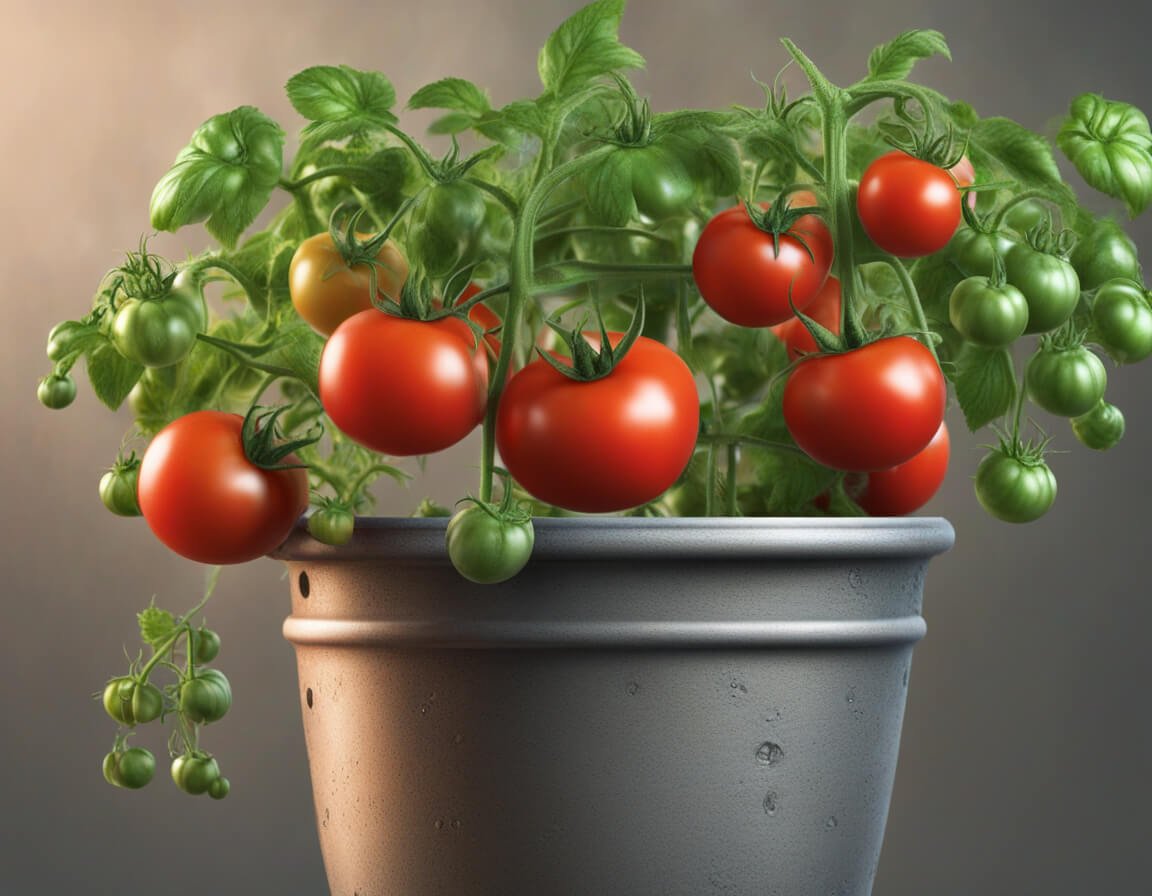
If you are limited on space or just prefer the convenience of container gardening, growing tomatoes in containers can be a really satisfying pursuit.
Step by step I am going to demonstrate how to grow the most delicious tomatoes right on your patio or balcony using a simple process.
Tomatoes are one of the most favorite vegetables (technically fruits) to grow at home and with container gardening, virtually everyone with some space and sunlight can do it.
Growing tomatoes in containers comes with several advantages whether you are an experienced gardener or beginner; they include better soil control, less chances of soil borne infections and also flexibility to position crops for maximal sun exposure.
Choosing the Right Container
Selecting Tomato Varieties
Before you start planting, it’s essential to choose the right tomato varieties for container gardening. Determinate varieties, which grow to a predetermined size, are often preferred for containers due to their compact habit.
Cherry tomatoes, patio varieties, and dwarf varieties are excellent choices for container gardening, as they require less space and thrive in confined environments.
Preparing the Container
Once you’ve chosen your containers, it’s time to prepare them for planting. Thoroughly clean and sterilize the containers to prevent the spread of diseases.
Ensure there are adequate drainage holes at the bottom of the containers to prevent water from pooling. Next, prepare a well-draining soil mix using a combination of potting soil, compost, and perlite or vermiculite for added aeration.
Planting Tomatoes
When planting tomatoes in containers, start by filling the container with soil mix, leaving a few inches of space at the top.
Carefully remove the tomato seedlings from their nursery pots, gently teasing apart any tangled roots. Plant the seedlings in the container, burying them up to their first set of true leaves.
Space the plants according to their mature size, typically 18-24 inches apart.
Watering and Fertilizing
Proper watering is essential for container-grown tomatoes, as they are more susceptible to drying out. Water the plants consistently, keeping the soil evenly moist but not waterlogged.
Avoid overhead watering, as this can lead to fungal diseases. Additionally, fertilize the plants regularly with a balanced fertilizer, following the instructions on the label.
Providing Adequate Sunlight
Tomatoes require plenty of sunlight to thrive, so it’s crucial to position your containers in a sunny location. Choose a spot that receives at least six to eight hours of direct sunlight per day.
If you’re limited on space, consider using reflective surfaces or placing containers on casters to move them throughout the day to maximize sunlight exposure.
Managing Pests and Diseases
Like all plants, tomatoes are susceptible to pests and diseases, but with proper care, you can minimize the risks.
Monitor your plants regularly for signs of pests such as aphids, caterpillars, or whiteflies, and treat infestations promptly using organic methods like neem oil or insecticidal soap. To prevent diseases, avoid overhead watering and overcrowding plants.
Pruning and Supporting Tomato Plants
Pruning and supporting tomato plants are essential for maximizing yield and preventing diseases. Remove any suckers that form in the crotch between the main stem and branches, as these can divert energy away from fruit production. Additionally, stake or cage your tomato plants to support their weight as they grow and produce fruit.
Monitoring Growth and Development
Throughout the growing season, monitor your tomato plants regularly for signs of growth and development.
Keep an eye out for nutrient deficiencies, pest infestations, or signs of stress, such as wilting or yellowing leaves. Adjust your watering and fertilizing regimen as needed to ensure healthy growth and abundant fruit production.
Harvesting Tomatoes
As your tomato plants mature, they will begin to produce ripe fruit ready for harvest. Harvest tomatoes when they reach their full color and firmness, gently twisting them off the vine.
Avoid pulling or yanking the fruits, as this can damage the plant. Store harvested tomatoes at room temperature until ready to use or refrigerate for longer shelf life.
Tips for Success
To ensure a successful container tomato garden, consider the following tips:
- Choose indeterminate varieties for continuous harvest throughout the season.
- Mulch around the base of the plants to conserve moisture and suppress weeds.
- Rotate your containers periodically to promote even growth and prevent root binding.
- Keep an eye on the weather forecast and protect your plants from extreme temperatures or adverse weather conditions.
Troubleshooting Common Issues
Despite your best efforts, you may encounter some common issues while growing tomatoes in containers. Here are a few solutions to address them:
- Yellowing leaves: Often a sign of nutrient deficiency, remedy by fertilizing with a balanced fertilizer.
- Blossom end rot: Caused by calcium deficiency or irregular watering, ensure consistent moisture levels and add calcium supplements to the soil.
- Pests: Control pests using organic methods such as insecticidal soap or introducing beneficial insects like ladybugs.
Conclusion
Growing tomatoes in containers is a rewarding endeavor that allows you to enjoy fresh, flavorful tomatoes right from your own backyard or balcony. By following the steps outlined in this guide and staying vigilant for pests and diseases, you can successfully cultivate a bountiful harvest of juicy tomatoes throughout the growing season.
